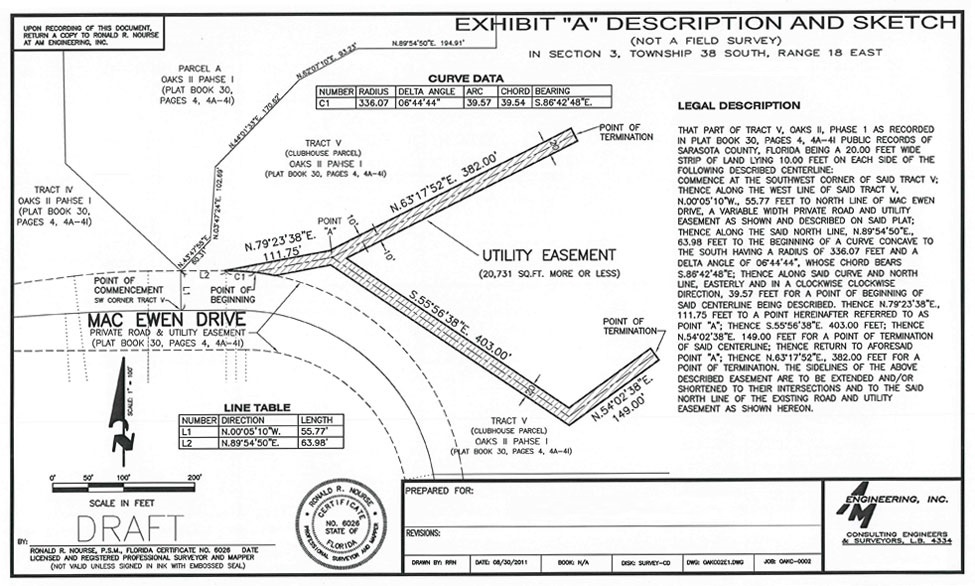What is an Easement?
By Lorne Shuman:
The process of buying a home can be intimidating and overwhelming. Homebuyers must face a multitude of major decisions, many of which are made more difficult by the use of complex legal terms. The term “easement” is common and is found in many Agreements of Purchase and Sale. This column will explain the meaning of this term.
An easement is defined as a right in property belonging to someone else which benefits land owned by the person who has the easement. Easements come in many forms. The following are some examples of some common easements. Firstly, there is the easement to re-enter. Prior to developing a subdivision, a developer must pave the streets, install hydro and gas lines, water mains and storm sewers, and construct curbs and sidewalks. Once these and other services have been set up for the individual lots in the subdivision, the lots are sold to a builder. Until the builder sells the lots and the municipality assumes responsibility for the subdivision, the developer has an ongoing obligation to maintain these services and make repairs when necessary. The developer must also finalize drainage and grading for the subdivision. Once the lot has been sold to the builder, however, the developer cannot legally enter onto the property without the consent of the owner. The solution to this problem is for the developer to reserve an easement to re-enter each lot until the municipality assumes responsibility for the subdivision. An easement in the form of a right of re-entry is common to new homes.
Another form of easement common to new homes is the maintenance easement. This type of easement is an outgrowth of the increasing price of land. With more housing taking the form of space-conscious semi-detached and row houses, it is becoming increasingly difficult for homeowners to have access to the exterior of their properties in order to clean the eaves, wash the windows, paint the dwelling and perform general maintenance. The solution to this problem is a maintenance easement.
In the case of a maintenance easement, an owner is granted access over part of the property adjoining their home and their neighbour’s home in order to repair and maintain his or her own home. For example, assume that Mark owns Parts 1 and 2 on a plan and that Jeff owns Parts 3 and 4. If part 2 is subject to a maintenance easement in favor of Jeff’s property, Jeff can enter part 2 to repair his own home without being considered a trespasser. Similarly, if part 3 is subject to a maintenance easement in favor of Mark’s property, Mark can enter part 3 without Jeff interfering. As such, the maintenance easement is a practical solution to allow homeowners to legally enter onto another property for a legitimate purpose.
 Another easement common to many properties is a utility or telephone easement. For example, there can be a Bell Canada easement. Where such easements exist, BellCanada typically has an easement over the rear four feet of a property. The purpose of this easement is to allow Bell to enter onto the lands to maintain and repair underground telephone lines. If anything is built on the lands over which the easement exists, Bell may require that the structure be relocated or removed to allow Bell representatives to gain access to repair the telephone lines.
Another easement common to many properties is a utility or telephone easement. For example, there can be a Bell Canada easement. Where such easements exist, BellCanada typically has an easement over the rear four feet of a property. The purpose of this easement is to allow Bell to enter onto the lands to maintain and repair underground telephone lines. If anything is built on the lands over which the easement exists, Bell may require that the structure be relocated or removed to allow Bell representatives to gain access to repair the telephone lines.
The Agreement of Purchase and Sale will often require that you accept title to the property subject to minor easements for the supply of utility lines, telephone services and sanitary sewers. These easements should not materially affect the use of the property.
If you are buying a freehold property, your title or ownership may be subject to an easement. This can be verified by a search of the title to the property or by reviewing the survey, if available.
It is important to understand the meaning and importance of an easement. An experienced real estate lawyer can always help in this regard.
Courtesy: Lorne Shuman
